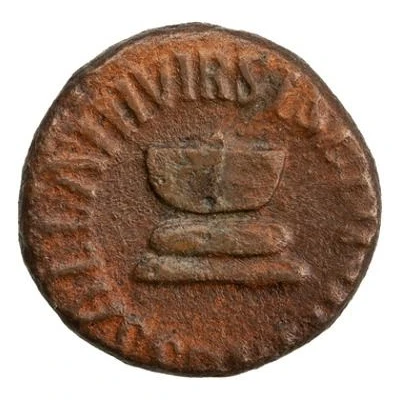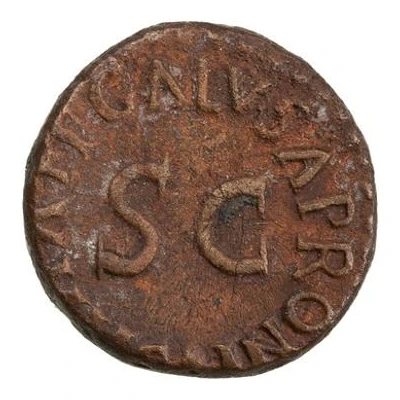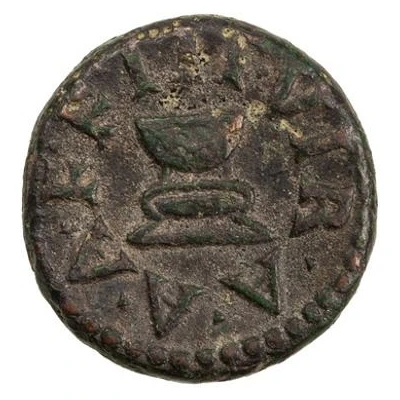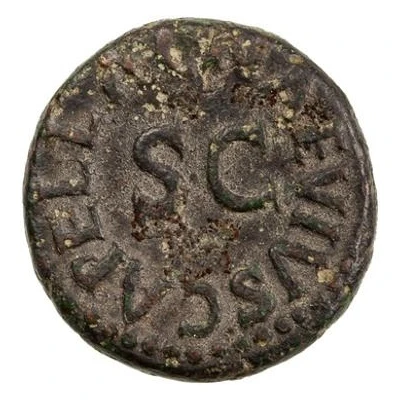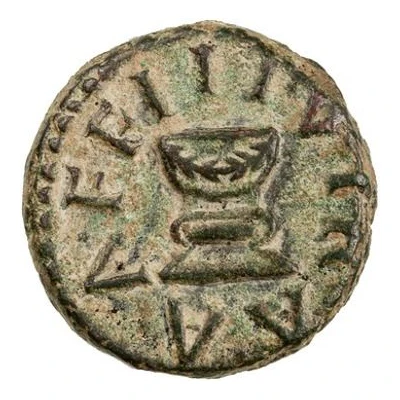
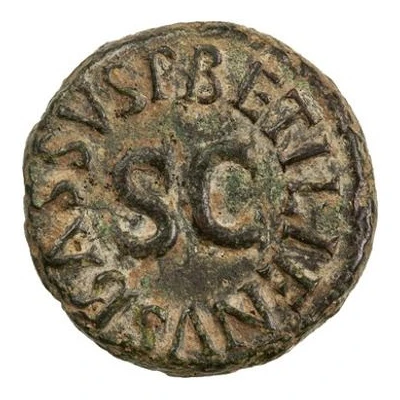

© American Numismatic Society (ANS)
Quadrans IIIVIR A A A F F 4 BC
4 BC year| Bronze | 3 g | 15.5 mm |
| Issuer | Rome › Roman Empire (27 BC - 395 AD) |
|---|---|
| Emperor | Augustus (Caius Octavius) (27 BC - 14 AD) |
| Type | Standard circulation coin |
| Year | 4 BC |
| Value | 1 Quadrans = ¼ As = 1⁄64 Denarius |
| Currency | Denarius, Reform of Augustus (27 BC – AD 215) |
| Composition | Bronze |
| Weight | 3 g |
| Diameter | 15.5 mm |
| Shape | Round (irregular) |
| Technique | Hammered |
| Demonetized | Yes |
| Updated | 2024-10-06 |
| Numista | N#247948 |
|---|---|
| Rarity index | 94% |
Reverse
Altar with bowl-shaped top, hung with garland.
Script: Latin
Lettering:
IIIVIR A A A F F
S C
Unabridged legend:
Triumvir Auro, Argento, Aere Flando Feriundo.
Senatus consulto.
Translation:
Triumvir Auro, Argento, Aere, Flando, Feriundo.
Magistrate (Triumvir monetalis) casting and striking gold, silver, and bronze coins.
Comment
Mass varies: 2.52–3.5 g;Diameter varies: 14–16.5 mm;
Source: Online Coins of the Roman Empire (OCRE)
Interesting fact
The Quadrans coin is interesting because it was used as a form of currency during the Roman Empire, specifically in 4 BC. It was made of bronze and weighed 3 grams, which was a significant amount for a coin at that time. Additionally, the coin features an image of IIIVIR A A A F F, which represents the Roman numeral III (3) and the letters VIR, which stand for "Vir Clarissimus," meaning "Most Illustrious Man." This indicates that the coin was issued to commemorate a particular event or person of high status.
